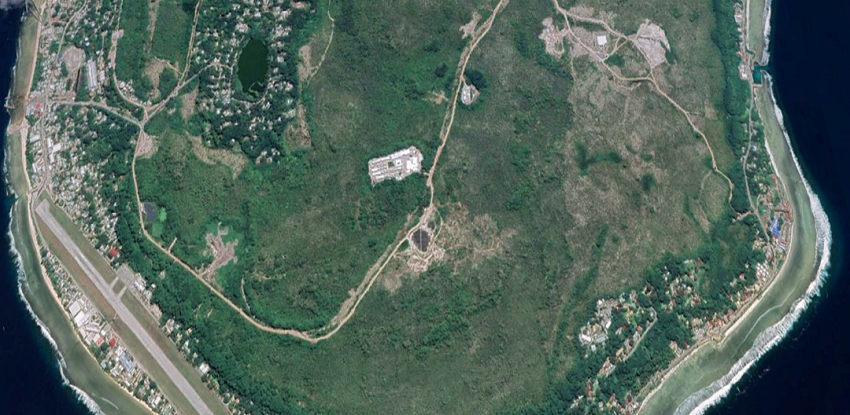For many Australians, Nauru is known only for its divisive history (and present) ‘hosting’ refugees that have made it to our shores. Others may recall a past that ransacked the nation’s ecology for its high-quality phosphate. Phosphate mining has stripped the elevated inland (‘Topside’) of its tropical forests to leave behind a pinnacled-desert, rendered largely uninhabitable. The nation’s 12,000+ people are left to live and work along the lower-lying thin strip of coastline around the island.
Facing a multitude of threats, including climate change, sea level rise and inundation, and sustaining a post-mining economy, Nauru recognises it must fully adapt. The Higher Ground Initiative was established as a multi-generational undertaking to address the long-term survival, viability, and resilience of Nauru – considering a managed migration of people and infrastructure to the island’s higher elevation inland (‘Topside’) whilst addressing the challenges of economic stagnation, declining employment prospects, food insecurity and biodiversity losses.
LEI has joined a team comprising master planners, urban planners and designers and architects to support the development of a master planning vision that will underpin the resilience and successful implementation of the Higher Ground Initiative.
For LEI – and our partners – this is something new. Despite the obvious linkages between planning, land tenure and surveying, it is rare thing for planning initiatives – even in developing countries, where land tenure reform needs may be higher – to proactively engage with and identify land tenure challenges and opportunities from project outset. Yet, many countries have a history of national visions, strategies and policies that have remained ‘on the shelf’ – and it is possible that land tenure barriers have contributed in many cases to slow, and often disputed, processes.
In the case of Nauru, the need to review land tenure barriers and opportunities will be essential to assist the mobilisation of land and master plan visions. Customary land comprises more than 90% of Nauru’s geographic area, but, due to past interferences, it is managed on a much more individual basis than many other Pacific nations. Most land for government, infrastructure and mining purposes is leased from customary owners – but most land portions have multiple owners, complicating the administration leases, as well as inheritance, transfers, and other land transactions. Nauru has yet to develop and implement development and building controls, making long-term, strategic planning difficult – both in the context of much needed utilities infrastructure (e.g., water and sanitation) as well as in enabling an emerging generation to access land for housing. Recognising the multiple roles that land plays in Pacific settings, LEI will also be drawing on our social safeguards expertise in the land sector, to ensure tenure and planning solutions are equitable and meet the needs of all citizens.
We recognise that this project is important, not simply for Nauru, but as a statement for other island nations in the Pacific and beyond. To identify and plan for the factors that can be controlled, and to design cities and urban areas that are resilient, not simply to climate change, but to the economic challenges of this dynamic world. We look forward to contributing in support of Nauru’s future resilience, and welcome opportunities to partner on tenure responsive planning projects in the future.
LEI support our lead partner Metrocology, alongside planners and architects from Design Workshop and Merrill Pastor & Colgan Architects.
[1] https://www.nytimes.com/2011/07/19/opinion/19stephen.html?_r=1&ref=opinion
Image: Google Earth

